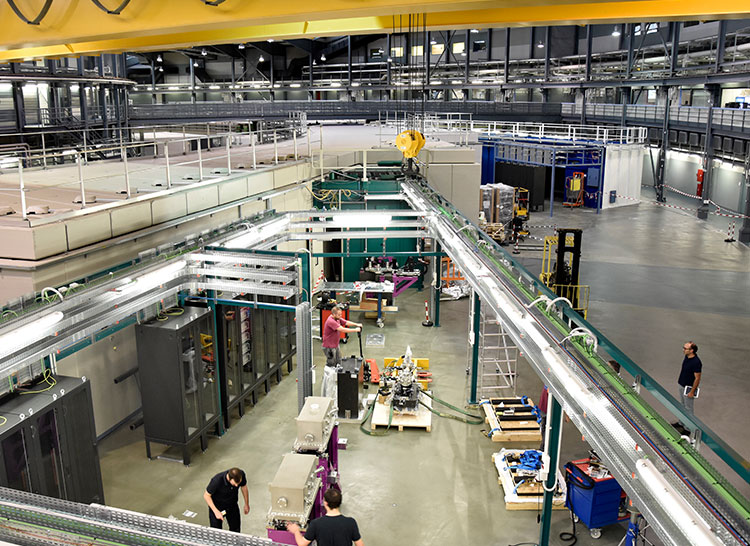ALBA Synchrotron

The 9th beamline of the ALBA Synchrotron is facing the last step before entering in commissioning: having assembled all the optical instruments. The beamline, co-funded with ERDF funds, will offer angle-resolved photoemission spectroscopy (ARPES technique) to official users at the end of 2020.
Building a new beamline is a long process in a synchrotron facility. Accurate design and technical specifications, preparing call for tenders and finding the appropriate scientists for the team are some of the milestones to pass before starting to set up the huge amount of components of a beamline.
In the last months, has being progressively transformed, reaching now its final stage. The electron detector is now being assembled and tested, the refocusing mirror mechanics and the slit to define, respectively, the beam spot in the sample and the experiments' energy resolution are installed, and the monochromator– specifically developed in-house – has partially been placed in the beamline.
"We are following the foreseen schedule, with the installation of some beamline components and the commissioning of the insertion device, and we expect having all the components assembled by the beginning of 2020. At that moment, the commissioning of the beamline optics will start and we'll be able to test its performance before opening the beamline to official users at the end 2020", says Massimo Tallarida, scientist in charge of LOREA beamline.
LOREA will offer high-resolution angle-resolved photoemission spectroscopy (ARPES technique) to the scientific community studying the electronic structure of materials. In particular, the beamline will be very useful for analysing topological matter, graphene, high-temperature superconductors and other advanced materials.
The end-station of LOREA consists of a central radial distribution chamber to which all other vessels are connected, including chambers for in situ UHV deposition and characterization, high pressure deposition (Chemical Vapor Deposition (CVD) and Atomic Layer Deposition (ALD)), organic molecules deposition. The 6-axis cryo-manipulator is designed to reach temperatures better than 10K. "Designing this beamline has been extremely challenging because the technique itself is complicated. But, apart from this, we have proposed a very complete beamline including many automatic movements, great experimentation options and a software and hardware specifically developed at ALBA to run the equipment", continues Massimo Tallarida.


The team from the Workshop and Logistics (Engineering division) installing the slit of LOREA.
The project is co-funded by the European Regional Development Fund (ERDF) within the Framework of the ERDF Operative Programme of Catalonia 2014-2020.

